

Area: 42.8 acres split between a 33.2 acre and a 9.6 acre site
Location: City of San Juan Capistrano, Orange County, California.
Date Acquired: January 2016
Acquisition Type: CNLM holds a conservation easement as well as a long-term agreement to protect the imperiled species and their habitats on the preserve. The preserve is owned by third party.
Key Habitats: Coastal Sage Scrub
Species of Special Interest to CNLM: Coastal California gnatcatcher (Polioptila californica californica)
Introduction
The Preserve was established as part of the 256.7 acre Pacifica San Juan development project located in the City of San Juan Capistrano, Orange County, California. 33.2 acres of the Preserve are located within the approximately 1,000-acre Northwest O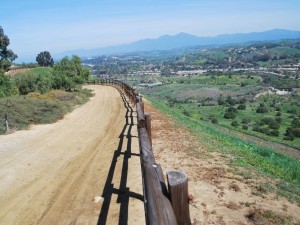 pen Space, which is comprised of a combination of privately and publicly owned open space land. The majority of the Northwest Open Space is either zoned as open space or permanently protected as open space through various mechanisms. The Preserve is currently in Year 1 of a 5-year habitat restoration required as mitigation for the development project. Beginning in at least the 1950’s, but perhaps dating back much farther into the 1800’s, the Preserve and most surrounding lands were grazed by cattle, sheep, and horses. The grazing eliminated much of the coastal sage scrub habitat from the site and introduced large populations of artichoke thistle and mustard, which have grown largely unchecked on the Preserve for decades. A Habitat Mitigation and Monitoring Plan is guiding the restoration effort, which seeks to remove invasive plant species and restore the Preserve to the key habitat of the coastal California gnatcatcher- coastal sage scrub. Upon completion of the restoration project, the Preserve will be comprised of high-quality coastal sage scrub habitat to support the coastal California gnatcatcher and management of the Preserve will be taken over by CNLM.
pen Space, which is comprised of a combination of privately and publicly owned open space land. The majority of the Northwest Open Space is either zoned as open space or permanently protected as open space through various mechanisms. The Preserve is currently in Year 1 of a 5-year habitat restoration required as mitigation for the development project. Beginning in at least the 1950’s, but perhaps dating back much farther into the 1800’s, the Preserve and most surrounding lands were grazed by cattle, sheep, and horses. The grazing eliminated much of the coastal sage scrub habitat from the site and introduced large populations of artichoke thistle and mustard, which have grown largely unchecked on the Preserve for decades. A Habitat Mitigation and Monitoring Plan is guiding the restoration effort, which seeks to remove invasive plant species and restore the Preserve to the key habitat of the coastal California gnatcatcher- coastal sage scrub. Upon completion of the restoration project, the Preserve will be comprised of high-quality coastal sage scrub habitat to support the coastal California gnatcatcher and management of the Preserve will be taken over by CNLM.
Conservation Significance
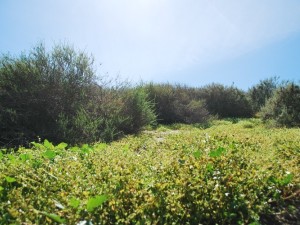 The Preserve was selected to mitigation purposes due to its ideal locations amidst substantial preserved lands in the Southern and Northwest Open Spaces, its potential to support high-quality coastal sage scrub and the coastal California gnatcatcher, documented occurrences of gnatcatchers on neighboring lands and its adjacency to several complementary restoration projects which will further enhance overall ecosystem benefits. Critical gnatcatcher habitat exists to the east and west of the Preserve and the restoration of the Preserve will effectively link the two habitat areas into one contiguous block of habitat, which will reduce a significant gap in gnatcatcher designated critical habitat. This will not only enhance dispersal of gnatcatcher fledglings but also reduce detrimental edge effects. In addition, the Preserve includes scenic resources, is adjacent to public access areas, and provides an open space buffer to nearby coastal resources.
The Preserve was selected to mitigation purposes due to its ideal locations amidst substantial preserved lands in the Southern and Northwest Open Spaces, its potential to support high-quality coastal sage scrub and the coastal California gnatcatcher, documented occurrences of gnatcatchers on neighboring lands and its adjacency to several complementary restoration projects which will further enhance overall ecosystem benefits. Critical gnatcatcher habitat exists to the east and west of the Preserve and the restoration of the Preserve will effectively link the two habitat areas into one contiguous block of habitat, which will reduce a significant gap in gnatcatcher designated critical habitat. This will not only enhance dispersal of gnatcatcher fledglings but also reduce detrimental edge effects. In addition, the Preserve includes scenic resources, is adjacent to public access areas, and provides an open space buffer to nearby coastal resources.
Restoration of the Preserve will also provide substantial regional benefits for other wildlife species since it is within an existing wildlife movement corridor that links reserved lands, and the Preserve is centrally located in this key wildlife corrid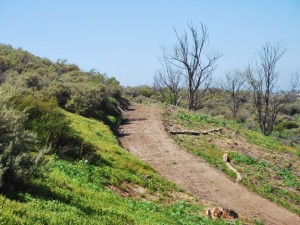 or. Many larger mammals, such as mule deer (Odocoileus hemionus), bobcats (Lynx rufous), and coyotes (Canis latrans) will use this corridor to expand foraging habitat, while an expanded corridor will also benefit many sensitive animal and plant species such as red-tailed hawks (Buteo jamaicensis), Cooper’s hawks (Buteo jamaicensis), coast live oaks (Quercus agrifolia), and various wildflower species.
or. Many larger mammals, such as mule deer (Odocoileus hemionus), bobcats (Lynx rufous), and coyotes (Canis latrans) will use this corridor to expand foraging habitat, while an expanded corridor will also benefit many sensitive animal and plant species such as red-tailed hawks (Buteo jamaicensis), Cooper’s hawks (Buteo jamaicensis), coast live oaks (Quercus agrifolia), and various wildflower species.
Our Work
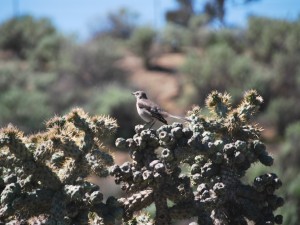 While the Preserve is going through the transformation from 100% non-native cover to native coastal sage scrub habitat, CNLM will monitor restoration activities to ensure conservation values are protected and enhanced. Once the restoration has reached success criteria and has been approved by the regulatory agencies, CNLM will begin active management for the coastal California gnatcatcher and other rare and sensitive species. Management of the Preserve will consist of monitoring for and collecting data on gnatcatcher and vegetation populations, invasive plant and erosion control, as well as restoration of adjacent properties paid for by a fund separate from the Preserve endowment. By restoring properties adjacent to the Preserve, CNLM will enhance the existing wildlife corridor while creating additional acreage for gnatcatcher habitat.
While the Preserve is going through the transformation from 100% non-native cover to native coastal sage scrub habitat, CNLM will monitor restoration activities to ensure conservation values are protected and enhanced. Once the restoration has reached success criteria and has been approved by the regulatory agencies, CNLM will begin active management for the coastal California gnatcatcher and other rare and sensitive species. Management of the Preserve will consist of monitoring for and collecting data on gnatcatcher and vegetation populations, invasive plant and erosion control, as well as restoration of adjacent properties paid for by a fund separate from the Preserve endowment. By restoring properties adjacent to the Preserve, CNLM will enhance the existing wildlife corridor while creating additional acreage for gnatcatcher habitat.
An additional fund was established for CNLM to restore open space properties adjacent to the Preserve. This fund will allow CNLM to remove invasive plant species to create 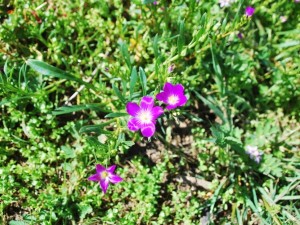 additional gnatcatcher habitat on properties within the Northwest Open Space. Most of the Northwest Open Space is already permanently preserved, but habitat values have been degraded and are in need of active efforts to return them to coastal sage scrub habitat. Gnatcatcher occurrences have been documented outside of the Preserve in isolated patches of coastal sage scrub habitat surrounded by non-native vegetation. These isolated patches and surrounding lands can be restored and adaptively managed over time so that they are no longer “islands” of coastal sage scrub habitat amidst invasive species, but instead form large, contiguous blocks of coastal sage scrub habitat with limited or no invasive interspersion.
additional gnatcatcher habitat on properties within the Northwest Open Space. Most of the Northwest Open Space is already permanently preserved, but habitat values have been degraded and are in need of active efforts to return them to coastal sage scrub habitat. Gnatcatcher occurrences have been documented outside of the Preserve in isolated patches of coastal sage scrub habitat surrounded by non-native vegetation. These isolated patches and surrounding lands can be restored and adaptively managed over time so that they are no longer “islands” of coastal sage scrub habitat amidst invasive species, but instead form large, contiguous blocks of coastal sage scrub habitat with limited or no invasive interspersion.
Public Access
Due to the vulnerability of the species and habitats that exist on this preserve, it is not open to the public. However, public access for hiking, biking, and equestrian use is available adjacent to the Preserve on City managed trails.
Contact
For information about Pacifica San Juan or the Center for Natural Land Management, please contact Korie Merrill, Preserve Manager at kmerrill@cnlm.org or 760.731.7790 extension 204.

